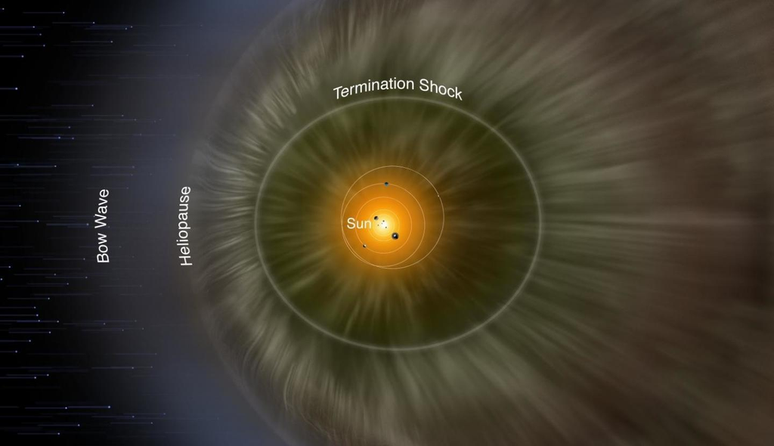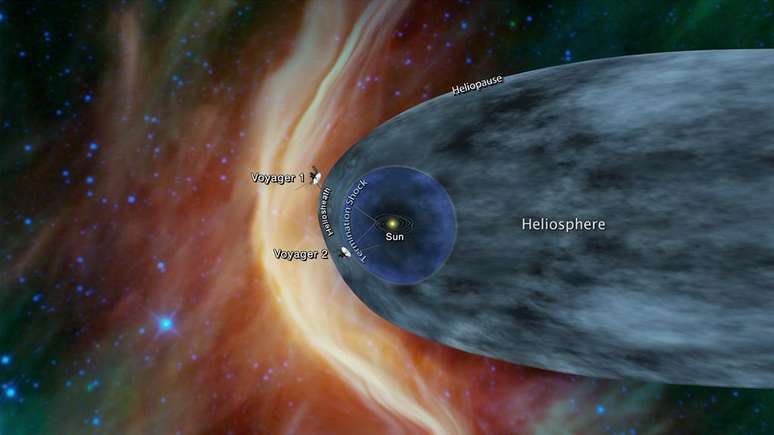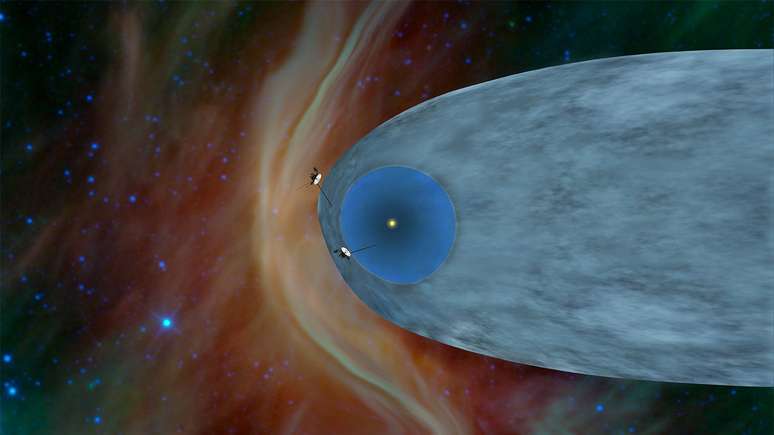In a new study, scientists suggest sending a spacecraft to the edge of the Solar System to study the shield that protects us from cosmic rays
Scientists have proposed in a recent study a mission to investigate the heliosphere, the boundary of the Solar System which acts as a shield against cosmic rays. The goal is to understand this level to evaluate astronaut safety on future missions.
- Formation of the Sun | What was the place where our star was born like?
- Why is space dark if the Sun illuminates the entire Solar System?
Astronomers know that the heliosphere is a region located between the solar wind and the radiation cosmic (produced by events such as supernovae) from other corners of the galaxy.
At the edge of the heliosphere there is the heliopause, which is like the final frontier after which interstellar space begins. However, scientists do not yet know the extent and other properties of the heliopause.
To learn more about the region, it is necessary to send probes with the appropriate scientific instruments to analyze the environment. To date, the only spacecraft that having reached the heliopause are Voyager 1 and 2which are equipped with instruments from the 70s.

Furthermore, the Voyagers have traveled for more than 40 years and show signs of wear, even occasional ones communication failures. It is possible that they will stop transmitting data to Earth before leaving the heliopause.
It is worth remembering that the Voyager program was designed to explore the planets Jupiter and Saturn and their moons, and not to explore the frontier of the Solar System. By reaching the heliopause, spacecraft have made history, but they are unlikely to reach new heights.
Study of the heliosphere
Now, the study authors have proposed a mission to further investigate this region. The heliosphere, bounded by the heliopause, plays a crucial role in protecting us: without it we would be bombarded by high-energy particles from all sides.
The astronauts departing The Earth’s magnetosphere, another layer of protection for our planet, are even more dependent on the heliosphere. Therefore, it is important to evaluate the real impact of this protection on the safety of space mission crew members.
This assessment must be done with a three-dimensional mapping of the heliosphere, since its shape is still unknown. Additionally, you need to collect data from the location to measure its physical properties.
Knowing that the heliosphere must have a tail – after all, the Sun is traveling through the Milky Way – the team suggests sending two probes beyond the heliosphere. One towards the “nose” and the other towards the tail of the structure.
This, according to the study, would be enough to obtain an overall vision of the shape of the heliosphere and its interactions with the interstellar medium. The mission, called the Interstellar Probe, would travel for 50 years to reach about 400 astronomical units (1 astronomical unit is the average distance between the Earth and the Sun).

Finally, researchers continue to argue that the spacecraft would have the potential to reach up to 1,000 astronomical units after the initial deadline. “This analysis took a lot of perseverance,” said study co-author Susan Lepri. “It started small and has become a huge community asset.”
The article was published in Frontiers of astronomy and space sciences.
Source: Frontiers of astronomy and space sciences, Universe today
Trends on Canaltech:
- The Google network that finds disconnected cell phones starts working
- Proof of Love Review | Romanticism is a hyperbole by Fábio Porchat
- WhatsApp prepares thumbnail video mode on iOS
- Amazon to put an end to Just Walk Out after controversy with Indians
- X-Men | The rivalry between Wolverine and Cyclops finds the perfect ending
- Microsoft confirms pricing for Windows 10 extended support
Source: Terra
Rose James is a Gossipify movie and series reviewer known for her in-depth analysis and unique perspective on the latest releases. With a background in film studies, she provides engaging and informative reviews, and keeps readers up to date with industry trends and emerging talents.







